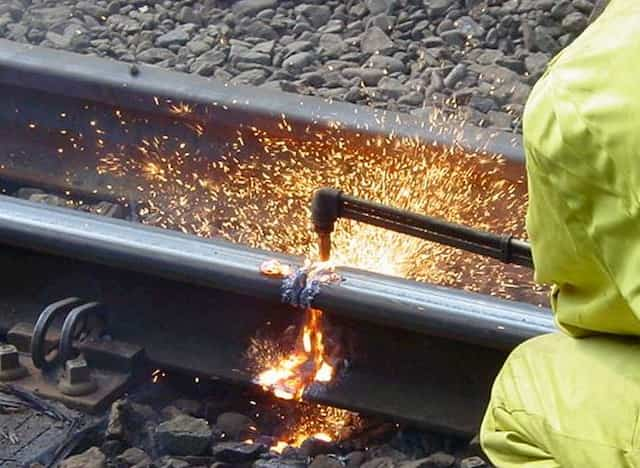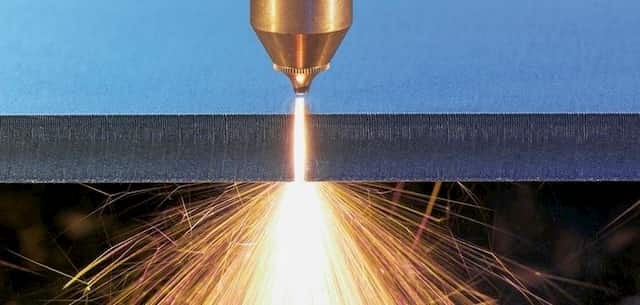Oxyfuel cutting is one of the available methods to fabricate parts from thick metal plates. Commonly, the upper limit for a manufacturer is around 150 mm but the thicknesses can go much higher than that.
The process entails heating the metal with a mixture of oxygen and fuel gases and then oxidising it. A high-pressure oxygen jet blows off the slag. This also creates the cut.
Both the heating and oxidation part set limits to the materials available for flame cutting.
Suitable Materials for Flame Cutting
As said, first the metal needs to be preheated to a suitable temperature to induce ignition when the oxygen flow hits the material. The temperature, though, has to be less than the melting temperature.
This rules out many metals from the possible list of materials for cutting. (It’s worth noting that there are some differences in the materials that can be oxy-fuel welded or cut.)
So, what can you cut with the oxy-fuel cutting process?
Flame cutting is suitable for two types of steels – low carbon, or mild steels and wrought iron.

Although the option pool seems really small, flame cutting still has its place cemented in the manufacturing industry due to its relatively low cost of cutting.
Another side to consider here is the cost of materials. Those really thick plates or blocks are always, if possible, made from carbon steels anyway to lower costs. So even if the material limitations are quite tight, they leave a lot of suitable work for flame cutters.
- Personal account manager
- Quality assurance
- Payment terms for companies
- On-time delivery by Fractory
Which Materials Cannot Be Cut by the Oxyfuel Process?
Flame cutting is not suited for anything other than carbon steel and wrought iron.
But let’s take a closer look at the causes behind these limitations. They are all related to the process steps described earlier.
Firstly, high-carbon steels do not seem very different from low-carbon ones. The reason for excluding high carbon steels lies in the high melting temperature of the slag compared to the base metal. The slag then mixes with the clean melt near the cut and interferes with the oxygen trying to reach the base metal.
Cast iron is another metal that could, from the outset, be suitable for cutting but is not. The large concentration of graphite and the microstructure of the metal itself make cutting it impossible.
Stainless steels have another problem. As oxidation is part of the cutting process, the underlying qualities of the metal are just opposing the whole concept.
Lastly, we come to non-ferrous metals. Aluminium and copper alloys both have too low melting points. The preheating step is a necessary part of the process but is just not suitable for these metals.



